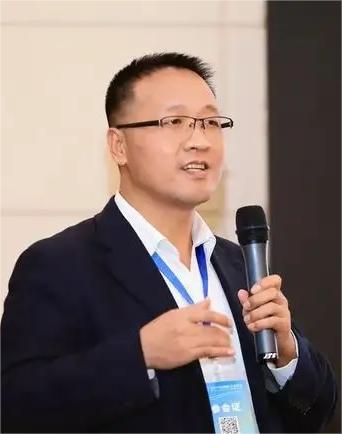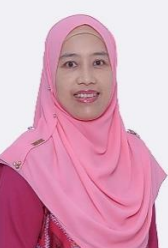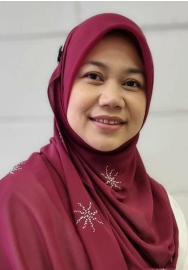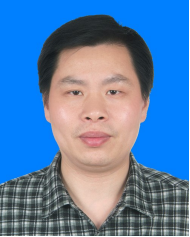
SPEAKERS |
Prof. Lide Fang Hebei University of Technology, China | Profile: Lide Fang (Member, IEEE) received the B.Sc. degree from China Jiliang University, Hangzhou, China, in 1998, the M.Sc. degree from the Hebei University of Technology, Tianjin, China, in 2005, and the Ph.D. degree from Tianjin University, Tianjin, in 2008.,Since 1998, he has been with the Quality and Technical Supervision College, Hebei University, Baoding, China, where he is currently a Professor and a Ph.D. Supervisor. He has authored or coauthored over 100 articles in core journals and 80 applied patents. His current research interests include multiphase flow measurement technology and instruments. Speech Title: Research on remote metering and calibration based on modern communication and network technology. Abstract:There are two problems in the traditional method of quantity value transmission and traceability. One is that it must be carried out offline. The working measuring instruments must be removed regularly and sent to the corresponding technical institutions for verification or calibration under the specified experimental environment, which affects the normal production process. The other is that they are both static or steady-state testing processes, and can only obtain the basic error of the instrument under the reference working conditions, Additional errors in field applications cannot be obtained. The development of instrument Internet of things technology makes people see the hope to solve these two problems. If the remote value transmission and traceability system of measuring instruments can be established by using Internet of things technology, the additional error of instruments can be obtained, which fundamentally ensures the accuracy and reliability of on-site measurement data. This paper investigates the research status of remote value transmission and Traceability Technology in the field of measurement instruments at home and abroad, puts forward three ways to realize remote value transmission in the field of measurement, namely, transmission standard table, standard table on site and transmission value method, and compares the difficulty of these three ways, The research progress of remote value transmission and Traceability Technology Based on Electrical and optical methods is introduced. |
Prof. Zuriati Ahmad Zukarnain Universiti Putra Malaysia, Serdang, Malaysia | Profile: Zuriati Ahmad Zukarnain (Member, IEEE) received the B.S. and M.S. degrees in physics and education from University Putra Malaysia (UPM), Selangor, Malaysia, in 1997 and 2000, respectively, and the Ph.D. degree in quantum computing and communication from the University of Bradford, U.K., in 2005.,She has been an Academic Staff with the Faculty of Computer Science and Information Technology, UPM, since 2001. She was the Head of the Department of Communication Technology and Networks, from 2006 to 2011. She was also the Head of the section of High-Performance Computing, Institute of Mathematical Research, UPM, from 2012 to 2015. She taught several courses for undergraduate students, such as data communication and networks, distributed systems, mobile and wireless, network security, computer architecture, and assembly language. She taught a few courses for postgraduate students, such as the advanced distributed and research method. Her current research interests include computer networks, distributed systems, mobile and wireless, network security, quantum computing, and quantum cryptography. She is a member of the IEEE Computer Society. Speech Title: |
Assoc. Prof. Rohaya Latip Universiti Putra Malaysia, Serdang, Malaysia | Profile: Rohaya Latip (Member, IEEE) received the bachelor’s degree in computer science from Universiti Teknologi Malaysia, in 1999, and the M.Sc. degree in distributed systems and the Ph.D. degree in distributed database from Universiti Putra Malaysia (UPM). From 2011 to 2012, she was the Head of the HPC Section, UPM. She consulted the Campus Grid Project and the Wireless for Hostel in Campus UPM Project. She is currently an Associate Professor with the Faculty of Computer Science and Information Technology, UPM. She is also the Head of the Department of Communication Technology and Networks and a Co-Researcher with the Institute for Mathematic Research (INSPEM). Her research interests include big data, cloud and grid computing, network management, and distributed database. Speech Title: Multi-objective algorithms for effective resource management in edge-fog-cloud computing. Abstract: Edge-Fog-Cloud computing is a platform that facilitates the processing of IoT tasks that generate a massive amount of data from edge computing. Small or delay-sensitive tasks should be sent to fog computing, while complex or large-scale tasks must be transferred to the cloud data center due to its enormous capabilities in computation and storage. However, workload allocation remains a critical concern, involving the allocation of sensitive tasks to edge-fog computing and large complex tasks to edge-cloud computing to meet user requirements based on their specific characteristics. The diversity of task attributes, such as input length, computing unit requirements, and sensitivity to delays, presents challenges in distributing workloads across different computing layers, resulting in both load overhead and increased transmission delays. The second crucial issue is task scheduling, which revolves around efficiently scheduling tasks to suitable resources across various computing layers while considering the unique characteristics of each task. Inefficient scheduling can result in increased transmission delays in edge-cloud computing, particularly due to the long distances involved, as well as higher energy consumption in edge-fog computing. The third problem concerns task offloading. When processing massive Edge tasks, computational devices may unexpectedly shut down due to the network's dynamic nature or power issues, leading to the interruption of task execution and incomplete processing. Offloading uncompleted tasks randomly to any computational node for execution can result in inefficient resource utilization and increased energy consumption. Therefore a proposed Task Scheduling algorithm, and Task Offloading algorithm are designed and experimented to reduces energy consumption in edge-fog computing by an average of 32% and the transmission delay on edge-cloud computing by an average of 22% compared to another approach. |
Prof. Weiqiang Xu Zhejiang Sci-Tech University, China | Profile: Weiqiang Xu is currently a Professor with the School of Information Science and Engineering, Zhejiang Sci-Tech University, Hangzhou, and also a Founder and Director of the Key Laboratory of Intelligent Textile and Flexible Interconnection of Zhejiang Province and Zhejiang Engineering Research Center of Industrial Internet Communication Technology. He has been awarded some research grants from the National Science Foundation of China (NSFC), including one Key Program of NSFC related to 5G in industry, and a Distinguished Young Scholar Supported by the Science Fund of Zhejiang Province. His research interests are intern of things, industrial Internet, and intelligent manufacturing. He has authored over 70 journal and conference papers in these areas. Dr. Xu has served on the editorial boards of IET Communications. He has served as the Publication Chair or a Technical Program Committee Member for several international conference on communications and networks, such as ICC, Globecom, and IWCMC. He is a Committee Member of the Chinese Association of Automation on Industrial Internet of Things. Speech Title: Challenges, Solutions, and Prospects of Communication Technologies in Industrial Internet of Things Abstract: This talk presents an overview of the key challenges, innovative solutions, and future prospects of communication technologies in the Industrial Internet of Things (IIoT). With the integration of intelligent devices and systems in industrial processes, the IIoT has emerged as a transformative force, enabling real-time data exchange, remote monitoring, and optimized decision-making. However, this integration poses significant challenges, including ensuring reliable and secure data transmission, managing network complexity, and addressing interoperability issues. To overcome these challenges, various cutting-edge solutions have been proposed, ranging from enhanced wireline and wireless protocols to advanced network techniques. The talk provides an in-depth analysis of these solutions, discussing their applicability, effectiveness, and potential limitations. Furthermore, it explores the future prospects of IIoT communication technologies, emphasizing the need for continued innovation and standardization efforts to realize the full potential of the IIoT in driving industrial automation and digitalization. |




